Aquamorphology
The work of teja van hoften is about observing and recording one's own existence and about her connection to nature. In the spring of 2022, van hoften was artist-in-residence for a short time at the Counting Post in Millingen aan de Rijn.

I immediately feel very comfortable in the Counting Station, a kind of being outside and at the same time staying very protected in my own world. Whether it is because of the slanted position of the windows, which go in from below, but I am more concentrated on the ground than on the sky, more on myself than on the outside world. Despite the many windows, I feel unseen. I can't hear the water and even the ships glide by slowly and silently, make the water ripple.
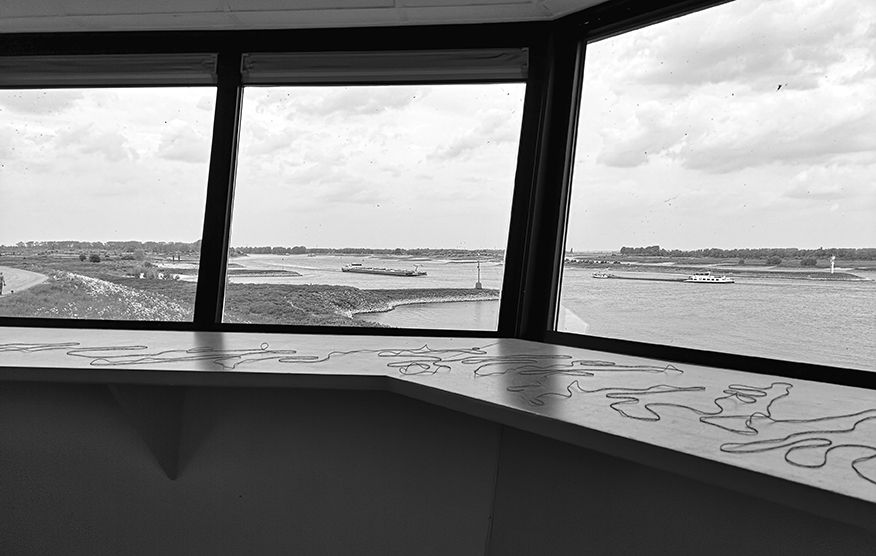
Colliding streams of water, once again changing direction through the banks, adding another dimension. Ships with their black and sometimes white mountains on deck, landscape transport. Unclear voices on the VHF radio. No more reporting. Nico Parlevliet's podcast on water (soundhouse.org), which I listen to as I hook currents and occasionally look up from my work to the water, also helps me. Floating on other people's memories, washing up on the shore of philosophical reflections on water. All this makes me even more of an outsider, someone who observes.
Despite the many windows, I feel unseen
I walk every day and collect. That's how rubrics arise naturally, such as cow patties, for example, which lie everywhere on the sand here in the Millingerwaard like dried-out sheets. Through various stages of decay, they are full of holes and curled up into paper-thin webs with impressive shadows, a wajang performance. The flat bricks, ringing in my pockets like the organ grinder's money box. Beautiful big lumps of brick, misfires from the countless brick factories here along the rivers. They are a landscape in themselves.
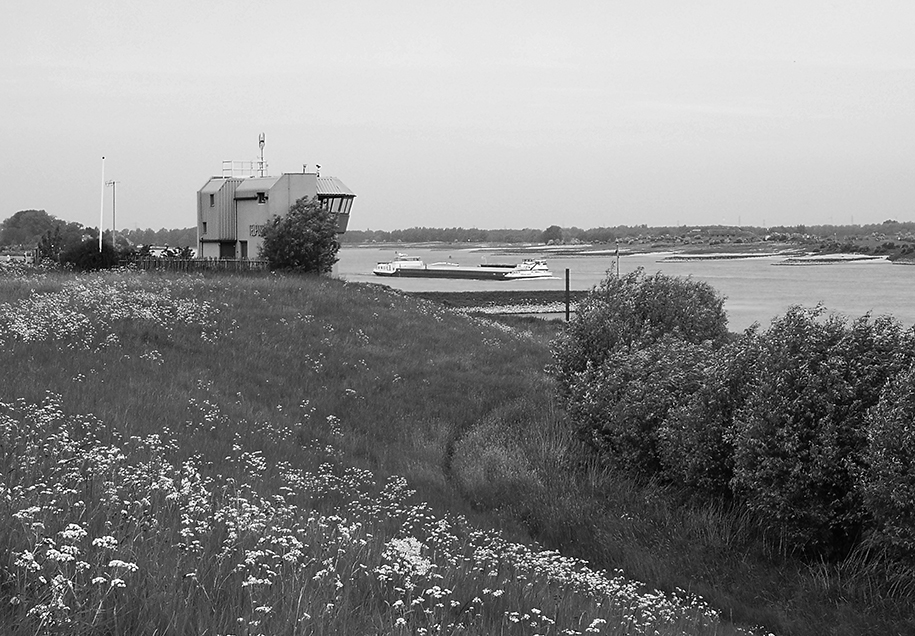
On Wednesday evening, the plant working group from Nijmegen, at my request, inventoried KM box 199- 431 around the Counting Post and came up with as many as 153 species, many of which had eluded me. Animals and especially birds are also numerous. Every day I enlarge my research area.
And what else can I do at a Counting Station but take stock of the view, count my blessings, chart wealth, create a happiness herbarium
Along the way I also collect shadows, of tree rivers flowing across the road and, in another place, how the bushes make a stairway on the potato field. And then there is, of course, what always happens, when I am suddenly alone; Observing myself, how much I eat and what, how much I go to the toilet, how much I sleep, lie awake, walk. Keeping everything down to the hour in an accurate accounting. It makes me feel very tidy, observant and kind of clean. And what else can I do at a Counting Station but take stock of the view, count my blessings, chart wealth, create a happiness herbarium.
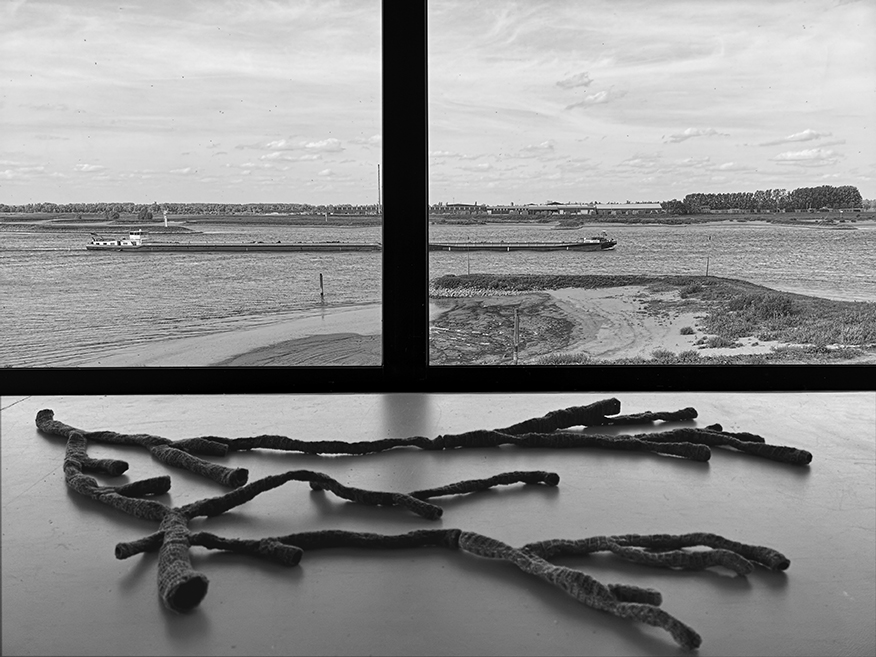
Also, with the help of the three ferries, I went to see my view up close and across. The Klompenwaard is also a very nice strolling area and somewhat similar, but the Millingerwaard is grander and I already love it more, because after a few days I already know it so much better. But I have to start limiting myself and come back to my original plan to study the shape of water. But that doesn't come easy.
As water flows faster, reflections behave more erratically
It seeps away between my eyelashes. Only photographs get a grip on the moving mutability and can grab the moment, which is often surprisingly different from how my eyes see it. As the water flows faster, reflections behave more erratically, branches zigzagging until holes fall in them.
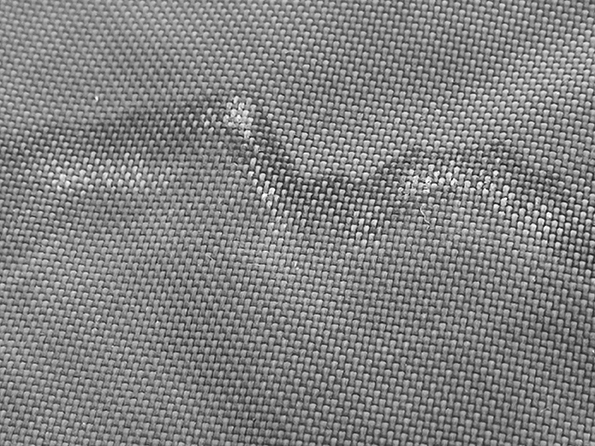
Blubber current, drawing tiny volcanic eruptions into its surface as the force of colliding currents drags the water across the sandy bottom and smashes it against the shore of the little beach I overlook from the Counting Post. The water prints of light-colored sand mixed with dark grit, forming an ever-changing tide line until the round shapes become dark clouds together, heavy weather on the way. Water like a dark starry sky with all its glints. Bank erosion, dividing the edge into layers at different heights in étages, into which the waves have sucked holes and slots. Flooded footstep of someone, heavier than me.
Back home at the Counting Post, I ran wires over the table edge
I make a current water level map of the Millingerwaard by walking as much as possible close to the banks of the seepage fingers and recording this via an app on my phone. This brings me to exciting places, soggy banks where suddenly there are three storks. Patches where I can't go any further because the trees come down to the water and the slope is too steep. Crawling over branches, wriggling my way through low vegetation of nailweed, nettle, brambles and young hawthorn, scuffing my legs and tugging at my skirts. Usually I have a choice of three options, the dry sometimes still marshy waterfronts where you occasionally have to go through clouds of mosquitoes, higher up the trees with lots of dead wood where it's bending, crawling and climbing and then even further away from the water, the low dense vegetation. Sometimes I don't get out unharnessed. Then I know where I want to go, but simply don't succeed and after a few steps I have to go back anyway. And over and over again.
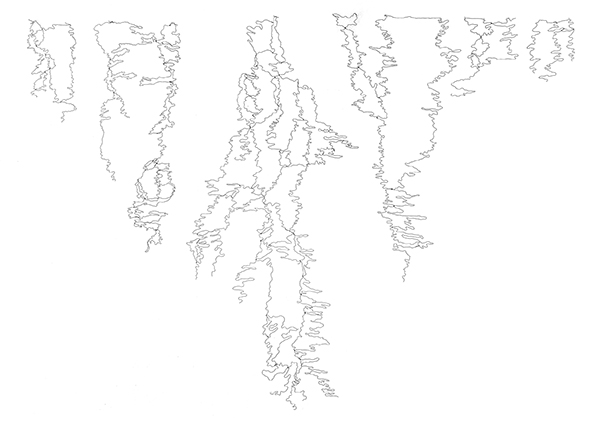
My legs strained, flogged, bloodied and sweaty. After that I didn't take my assignment very closely, but of course I try to follow the tide line as much as possible. Often the water mark looks beautiful, like a high mountain range, layer after layer. Once focused on that, I encounter the tidelines everywhere, in the rippling of my old skin on my upper arm. The hay, flushed together in long lines across the land. Even the marble of a tombstone in Keeken knows its tide mark. But the tidemark, left by the sweat on my backpack, most closely resembles the water prints. When I zoom in and take a picture of it, it becomes an embroidery pattern of the Alps. Back home at the Counting Post, I have threads flowing over the table edge.
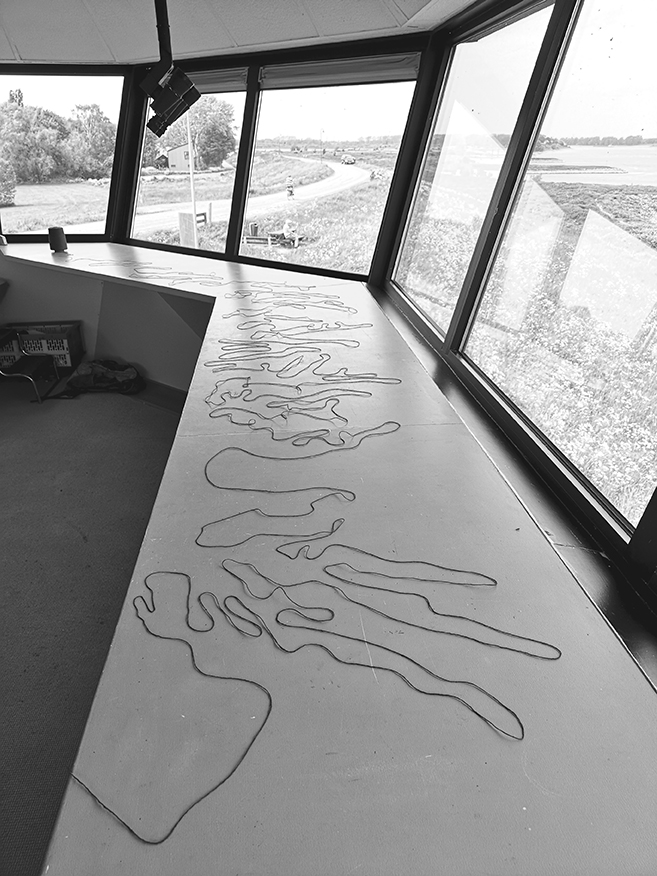
It has been a short but intense period. Not only have I physically been lugging around a lot of branches and stones and gathering all kinds of things, I have also been thinking and thinking a lot, which I later plan to incorporate into sculptures and a book, in which I will bring together my thoughts, hiking drawings and photos to give a picture of a special place in a beautiful area.
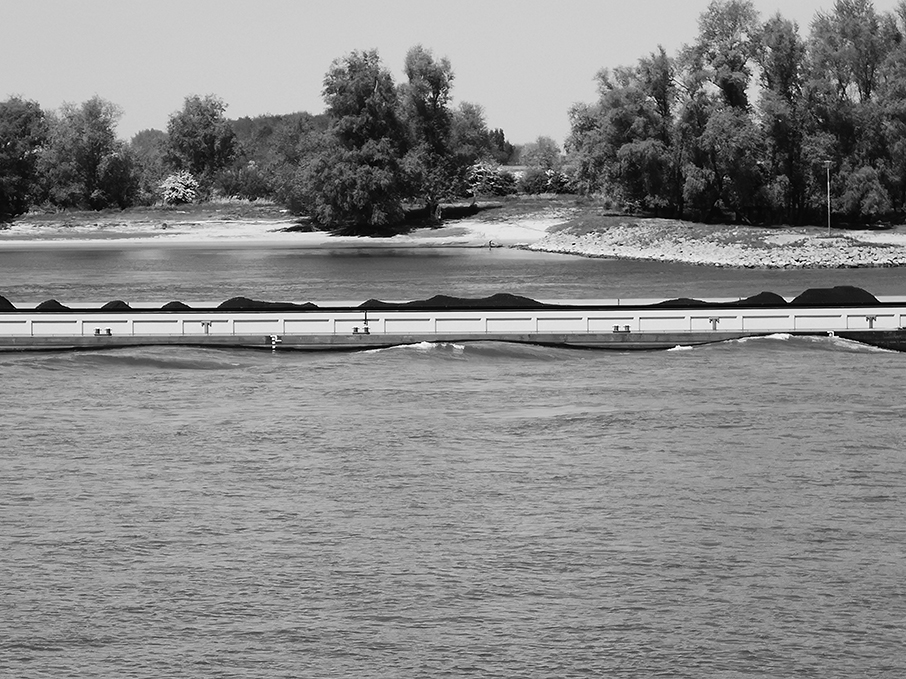
The relationship between the river and its bed, water and soil
The banks, the soil composition of gravel, clay or sand, stones and trees along the water's edge, they direct the water. Usually she is compliant and follows the path of least resistance, gentle and flowing. But her caresses can be fatal. Decisively, she penetrates the smallest pores of the soil. Like deep roots she undermines it, causing walkways to collapse, to wash away, to merge into her great body. Her erosive power is contained in every drop. Water is with so many, a wave never comes alone. Her mass and weight sway it. Violence lies in her relentless patience, compelling tenacity and endless endurance.
Water is with so many, a wave never comes alone
It grinds, scrapes and sucks. But the bottom allows it and loses itself, shapes itself to the rhythm of the waves, mirrors the current. The water, in turn, seeks hold on the bottom and takes shape through what surrounds it. They can bother each other. But they cannot do without each other. They complement each other. They are each other's mold and forever condemned to each other. Their reckless abandon, this merging into each other can lead to boundless slur. No longer knowing where one begins and the other ends, it can become dangerous, to which the warning signs at the sand spit bear witness - quicksand.
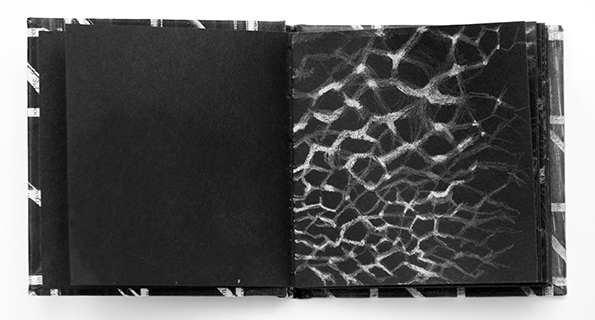
Water lets itself go, surrenders to the guiding masculine principle of soil and outside factors such as wind, as well as human intervention. A boat, folding the water into pleated skirts or bubbling violently for a moment. The violence of dikes, blocking her way, groynes trying to break her strength. How credible are they? Can they actually deliver, what they claim? Water is stubborn and willful. Elusive and therefore invulnerable, she flows on, seeks the soil that suits her and goes her own capricious way.


